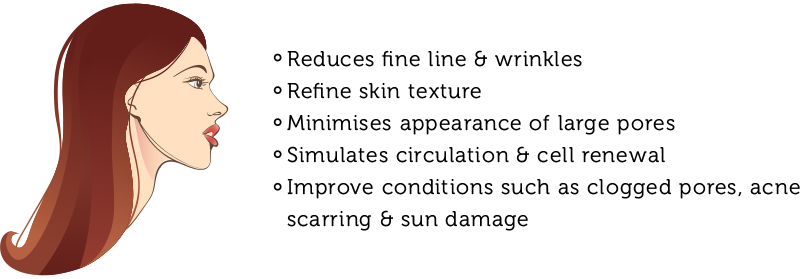
Skin polishing is a professional technique that exfoliates your skin deeply, eliminates dead skin cells, and exposes the underlying beautiful skin. This therapy is recommended prior to significant occasions such as weddings and large events. It’s done by using handheld machines or chemicals to polish your skin and injecting crucial nutrients into the top layer. Hyperpigmentation, age spots, and photo-ageing symptoms can all be treated with this technique.
One such technique is known as skin polishing procedure or microdermabrasion – if the word would be broken up, it would consist of three parts – micro, derma and abrasion. Derma refers to the skin and abrasion is a method by which the dead skin cells of the skin are rubbed away. The method basically uses instruments that will create the effect of abrasion on the skin, while keeping it really gentle. The process will scrub away the thicker layer of your skin, which is the outer most and if often really uneven. When this layer is scrubbed away, the softer and more even skin that is hidden just beneath becomes visible, giving you a glow. This procedure is many a times called as face polishing or body polishing depending on the area that is being treated.
Types of Skin Polishing
Microdermabrasion is one of the most common types of skin polishing methods, and these days, tools as well as diamonds are being used to do the same. There are also methods which can be tried out at home, using ingredients such as olive oil, sugar, baking soda, strawberry and wheat flour
The following are the primary advantages of skin polishing:
- Even skin tone.
- More effective than facials.
- Glowing skin just after just one session.
- Dead skin cells are removed.
- Exfoliation on a large scale.
Overall, skin health and looks are improved.


Before the Surgery
When you first head for a microdermabrasion treatment, you will have a consultation session with the doctor or medical specialist who will be conducting the procedure.You will be asked about a variety of things, such as:
- Why you want to get the treatment done
- Whether you are undergoing any medical treatment
- Whether you have any allergies
- Whether you use alcohol or tobacco on a regular basis
During the Surgery
In simple terms, a skin polishing or microdermabrasion procedure will sand away your top layer of skin, which is normally thick and uneven. Normally, the procedure is done using a wand that has diamonds in the tip or has micro-particles. Once the top layer has been removed, there is a stimulation of the newer skin growth.
- Procedure style 1 – A hand help device, which has some sort of a relay system for tiny crystals will be used on your face. The crystals will scrub away the dead skin cells and the uneven epidermis, which a vacuum or suction device will suck the crystals as well the dead skin cells back inside, revealing clean and smooth skin.
- Procedure style 2 – This is a newer approach where a diamond tipped wand is worked gently across your skin. Your skin will be exfoliated, and the only discomfort you will feel is a slight scratching on your face. There is also a sensation of vibration on your skin, which is the dead skin being sucked away.
After the Surgery
There is actually no downtime with this procedure and you can return to your normal life within hours. You might need to invest in some special creams or moisturizers, which your doctor will suggest to you. There might be a little bruising, redness or skin sensitivity, immediately after the procedure, but the same will disappear in a matter of days.
How microdermabrasion works?
Microdermabrasion is a non-invasive process that improves the overall tone and texture of the skin. Sun damage, wrinkles, fine lines, age spots, acne scarring, melasma, and other skin-related issues and conditions can all be improved with it. Microdermabrasion is a clinical procedure. It’s usually done by a certified skin care specialist. Microdermabrasion does not require the use of anaesthetic or a numbing medication. In the targeted regions, your doctor will use a handheld instrument to gently spray on the particles or scrape away the outer layer of skin. After the treatment, you must apply a moisturiser and a sunscreen on your skin.
